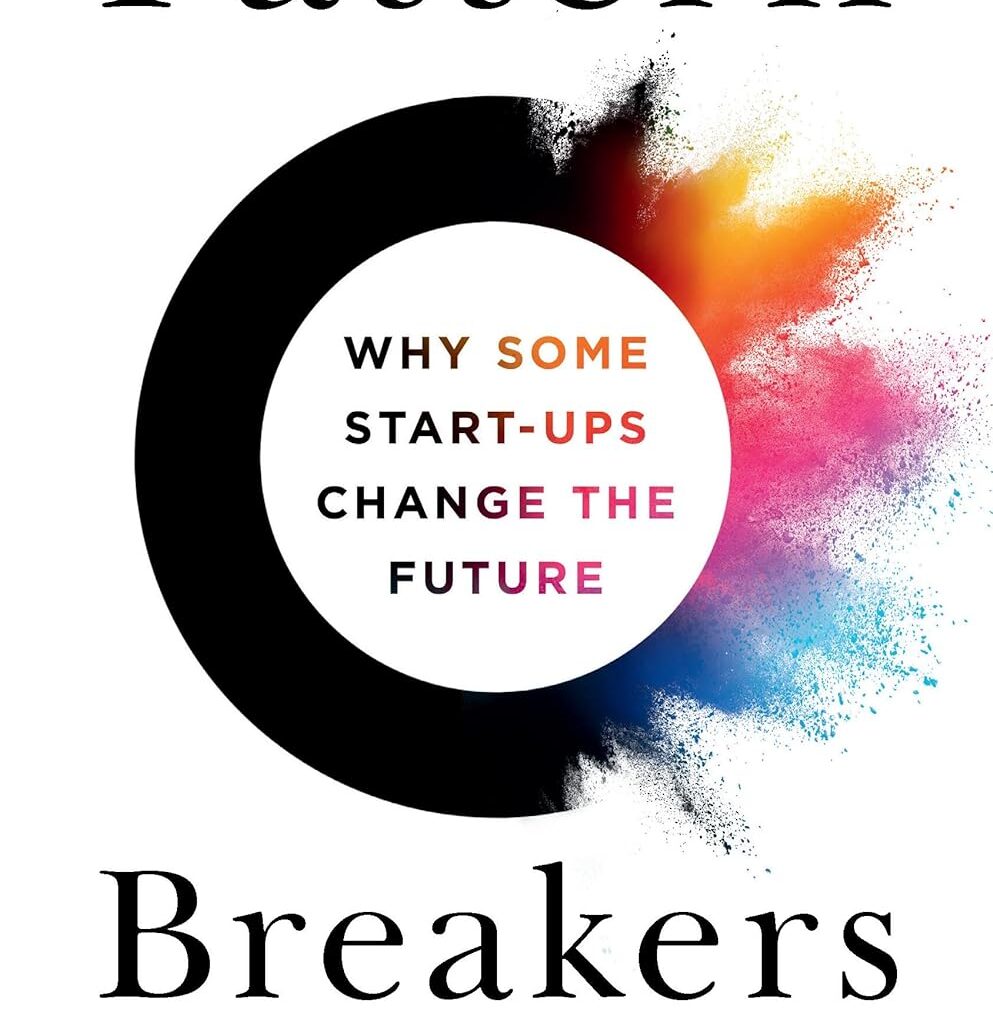The following is an excerpt from “Pattern Breakers: Why Some Start-Ups Change the Future” by Mike Maples Jr., co-founder of Floodgate; and Peter Ziebelman, a venture capitalist who teaches entrepreneurship at Stanford. The book captures years of first-hand insight and research into why and how most successful startups harness what Maples calls “inflections.”
Timing is Everything: One of the Dumbest Ideas Ever and How It Broke Through
“My belief has always been that timing is the major variable. It’s the major form of entrepreneurial risk in the tech industry, and I think maybe by a wide margin.” —Marc Andreessen
We’ve defined an inflection as a change that a start-up can exploit to radically alter how people think, feel, and act. We’ve also suggested that exploiting an inflection’s potential to change the future requires combining the new thing with people’s willingness to exercise the new power it gives them—and that brings us to the importance of timing.
The arc of technological improvement is ever present. But there are limited windows in time in which an improvement reaches a tipping point in its ability to effect change. You may have correctly identified an inflection, but if you act too quickly to harness it, you’ve got a science project. It’s too soon to radically change human behavior. If you act too slowly, you’ve got what is now a conventional idea, embraced only after it became obvious to many others—leaving your idea to compete against a crowded field. There’s a Goldilocks moment, neither too early nor too late but just right, when you can bring about meaningful change.
Verizon Digital Ready: Free Training in Skills Entrepreneurs Need
Of the numerous risks you face, timing is perhaps the biggest, and it is fraught with the most uncertainty. Here’s just one example: Many of the ideas that formed the foundation of the iPhone were tried over a decade earlier at a company called General Magic. But General Magic didn’t achieve commercial success. The technology wasn’t yet ready to enable the right capabilities at the right price to achieve the type of revolutionary success the iPhone enjoyed. Ironically, many of the people who worked at General Magic ended up at Apple, ready and waiting for that Goldilocks moment when the timing was right for the iPhone to become a phenomenal success.
Conventional thinkers often maintain that if something was tried in the past and didn’t work, then it’s already been “proven” not to work. This betrays a lack of understanding of how inflections drive change. It has never been easier to start a company or launch a new product or service. The world of start-ups is efficient at letting every idea get tried. The key question to ask isn’t whether an idea has been tried before; it probably has. The important question is: Why is now the time it’s going to work? What inflection has emerged that makes this time different? Quite often the team that finally gets the timing of an idea right isn’t even aware that it’s been tried before and failed—and that’s to their advantage. You can think of it this way: Every breakthrough will happen. The question is when, not if.
When a venture capitalist responds to your pitch by asking, “Why now?” they’re really asking, “What inflections does your idea harness? And why is now the time to harness them?”
Timing, Take Two: Inflections after You Start
Start-ups often benefit from inflections that occur after they start. Remember, Lyft didn’t begin as Lyft. It started as Zimride, a web-based hub that enabled commuters to share rides at corporate and college campuses. John and Logan launched the Lyft service after the inflection of the iPhone 4s, with its introduction of embedded GPS-locator chips.
Zimride was based on a different inflection: the Facebook Connect third-party application programming interfaces (APIs). In fact, Zimride received a grant from Facebook because it intended to use those capabilities. Table 3.1 shows how a stress test of the Face- book Connect inflection might have looked in retrospect.
One reason Ann and I backed Zimride in 2010 was because of what we had learned from our foolish decision to pass on Airbnb in 2008. At the time we heard the Airbnb pitch, we thought, “Nobody is going to want to stay in a stranger’s house. That’s crazy!” But the launch of Facebook Connect not long after we passed had a big impact on Airbnb’s prospects. People seemed far more familiar if hosts and guests could see each other’s Facebook profile information.
Table 3.1 Inflections Stress Test: Facebook Connect Inflection Introduction of Facebook Connect third-party APIs
| The new thing | Facebook introduced Facebook Connect third-party APIs to developers in 2009. The new service enabled people to learn about other people’s identities from their Facebook profile information. |
| Why it’s powerful | It allowed people to confidently interact with others who might have been strangers before. It also allowed them to rate each other and have those ratings attached to their social identity.
Since almost everyone has a profile on Facebook, this development potentially impacted nearly anyone with a computer or smartphone. |
| Conditions for success | For this inflection to fulfill its potential:
|
The iPhone 4s was introduced later, in 2012. This inflection made it possible to offer ridesharing for everyone, at the level of peer to peer. The Zimride founders were savvy enough to grasp that fact quickly. The Uber team came from a different starting point, since they had developed a premium service for black-car drivers and riders, but they were similarly tuned in to the potential of this new inflection. The two companies noticed it at the same moment and ultimately pivoted to ridesharing services that put them in competition in the same new market.
X/Twitter offers another example. It was launched before Apple introduced the iPhone and the App Store. But as soon as those new inflections arrived, X/Twitter’s opportunity expanded because it became far easier to compose tweets on mobile devices at any time. The new inflection was a force multiplier for X/Twitter’s already compelling opportunity.
Level Up Your Digital Skills: Free This Week with Verizon Small Business
Good Ideas, Bad Ideas … and Breakthroughs
An inflections stress test can help a founder weed out some of the most dangerous ideas of all: plausibly good ideas that aren’t driven by any sort of inflection. Because these ideas sound plausible, most people you talk to about them will think they make sense and should be launched. The false positive of that feedback can reinforce your own intuition and lead you to devote years of your life to an idea with limited upside. As an example, I’ve often been pitched on ideas related to mental health. The founder will say we’re in a mental health crisis, it’s gotten worse with the pandemic or Instagram, it’s having a huge negative impact on society, and we’ve got to do something about it. I agree! A new idea to better address mental health will generate a lot of positive feedback. People have personal experiences that will help them relate to the idea. They may get very positive encouragement from investors, advisers, and others touched by a mental health crisis. Despite the encouragement, the idea needs to be supported by an inflection that offers a set of empowering capabilities to change the future of mental health.
An inflections stress test can also protect the seemingly bad idea because of the powerful underlying inflections it reveals. That’s part of what’s so humbling about start-ups: many of the very best ideas seem bad but turn out to be non-consensus and right.
Shining a Light on the Internal Struggles of the Entrepreneur
Let’s go back to the beginning of my business relationship with Justin Kan and what became Twitch. On the surface, nothing about it suggested breakthrough success in the making.
I was wrapping up a pitch meeting in Palo Alto one day in 2007 when a stranger walked in. For a moment he stood silhouetted in the doorway like a character from a 1950s gunslinger movie. But it was a coffee shop, not a saloon, and he wore a hoodie instead of chaps and a baseball cap instead of a cowboy hat. Attached to the cap was a camera with wires running into a backpack. Even by the standards of Silicon Valley, this was all a little weird. He began walking straight for our table as if he’d come to meet me.
Which he had.
I’d been talking with the founders of Weebly, a start-up that made it easy to build websites. I told them that I wanted to invest and would talk with other people I knew who might join me. And now here came this guy, whom they’d invited to crash our meeting. They’d alerted me by email not long before we met, but I hadn’t seen the message. It still makes me smile when I look back on it.
“He’s got this new idea called Justin.tv,” the Weebly guys said. “We think you’re going to like it. Do you have time to let him explain it?”
“I guess I do now,” I said, as our new guest sat down next to me and took out a laptop.
What Makes a Good Idea for a Startup? From ‘Myths and Realities of the Startup World’
“My name is Justin Kan,” he said, “and I’m with a start-up called Justin.tv. I’m going to create the internet’s first livestreaming reality show where viewers follow me throughout my life 24/7.” He turned the laptop toward me. An image of my face filled the screen because he was live-casting me as we talked.
I tried to be as delicate as possible, but it wasn’t easy. “Justin. Come on. That’s one of the dumbest business ideas I’ve ever heard.” I meant it. It really was—hands down—one of the dumbest business ideas I’d ever heard. Still is.
But there was something different about Justin. He came across as someone who liked to kick ass and make things happen. Plus, the technology worked, which was no small thing. “How does it get from the camera on your baseball cap to the screen?” I asked. “What’s in the backpack?”
“The internet is a hostile networking environment,” he explained. “It’s very difficult to stream video live.” (Remember, it was 2007.) “But we’ve put together some hardware that’s based on the cellular network combined with software that’s native to the internet. That allows us to stream live. We believe that content delivery networks are going to get better in the next few years, and that will make it much easier for everyone to stream live video. By then we’ll have a big lead.”
I wasn’t thinking then in the language I’d use now, but Justin had just touched on a potential inflection lurking beneath his crazy idea.
Intrigued, I went home and set out to learn a bit more about Justin and his team. It turned out that he and another Justin.tv cofounder, Emmett Shear, had already started a company that made an online calendar system called Kiko. Then Google came out with its online calendar and gave it away. Game over.
Normally when people sell their company, they try to think of another company that might acquire it; maybe they’d pitch it to Google or Yahoo or eBay. But Justin and Emmett put Kiko for sale on eBay. No one does that! In fact, no one even thinks of doing that. But they did—and they sold it for $250,000. I loved that!
How to Overcome FEAR And Ask for Money
I decided that if anybody was going to figure out livestreaming, it might just be Justin and his team. They had the technical talent, the passion, and the frugality to spend the absolute minimum required to build a business. That very night, I decided to cut them a small check and see what happened.
I’ve already told you how the story ended: over the next seven years, what started as Justin.tv became Twitch, the world’s dominant livestreaming platform for gamers. Justin and his cofounders created a new form of social activity. In 2021, 22.8 billion hours of live content were streamed on Twitch.
How could an idea as dumb as Justin.tv end up transforming entertainment? The answer has a lot to do with inflections. Video streaming had started working at scale with YouTube beginning in 2005, and by 2007 broadband penetration had become extremely high. Those inflections were obvious by the time I met Justin. The key question to ask in evaluating Justin.tv wasn’t whether anyone would watch his life all day and all night. It was whether content delivery networks had reached an inflection point that would enable livestreaming.
That’s why the contents of Justin’s backpack that day were so important: he and his cofounders were employing a clever use of EVDO (evolution-data optimized) cellular technology combined with internet streaming software. This apparatus allowed Justin to capture video live from anywhere with a cellular connection (basically anywhere) and stream it to the internet for viewing via a browser. I could also see that CDNs, or content delivery networks, were improving at a rapid rate. I thought this would continue and further enhance the opportunity to livestream at a higher quality and lower cost in the future.
In addition, user-generated content was becoming a big deal in blogging as well as on news sites like Digg. The Time magazine person of the year in 2006 was “you,” a takeoff on YouTube, which had been a runaway success. The trend was clear: people wanted to express themselves through these newly emerging platforms, and video was at the center of it all. Why wouldn’t they want to stream live videos too?
Scale without Losing Your Soul: The Startup Culture Guide
Justin.tv launched as nothing more than a 24/7 livestream of Justin’s daily activities. Its novelty didn’t attract much attention. But not long after I invested, the team made their first pivot. They dropped the Justin reality show and relaunched as a platform, segmented by channels, where anyone could broad- cast their own live videos. The pivot created a new set of issues because people started streaming copyrighted live content, such as sporting events. (This development landed another Justin.tv cofounder, Michael Seibel, in front of a congressional committee, whose members were not too happy about this use.) The founders pushed their way to profitability by running ads, but they weren’t doing anything they thought was destined to truly matter. It felt like they were wasting their time.
The inflections were real, but something was still missing. Another Justin.tv cofounder, Emmett Shear, began losing faith. He dialed back for a couple months, didn’t work as hard, hung out with friends, and played video games. Paradoxically, the act of letting go opened his mind and brought him closer to a breakthrough idea.
Emmett asked himself a simple question: How do I actually use our own platform? The answer was also simple: he liked watching skilled people play video games. He wasn’t alone. About 2 percent of users did the same—and it was a passionate 2 percent. Emmett did some digging. He asked about forty gamers why they livestreamed themselves in action and what could make the experience better. It seemed like a small opportunity, but one worth exploring, so Emmett and his team created more appealing features for gamers to stream as well as a way for them to make money off their streams.
More people began coming to the site. “It started feeling more like you were chasing a boulder down a hill than you were pushing a boulder up a hill,” Emmett later said. “We really started getting this sense of pull, where the market was pulling us along.”
The team renamed the gaming channel Twitch, and of all their channels it grew the fastest. Not long after that, they spun it out as a separate company. Today, Spencer, my gaming and media-savvy son, still considers Twitch the best idea I ever supported.
Excerpted from “Pattern Breakers: Why Some Start-Ups Change the Future” by Mike Maples Jr. and Peter Ziebelman. Copyright © 2024. Available from PublicAffairs, an imprint of Hachette Book Group, Inc.







